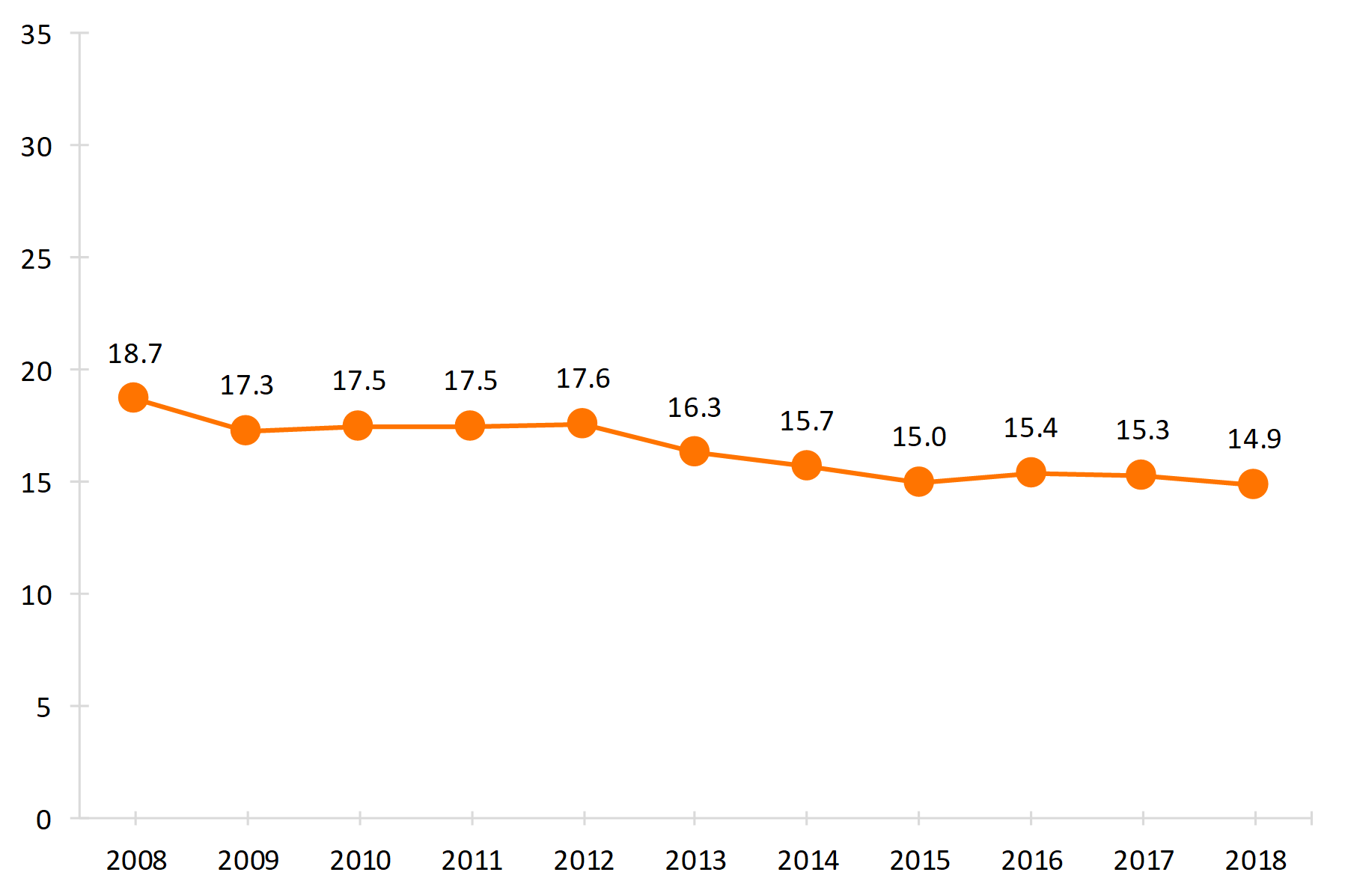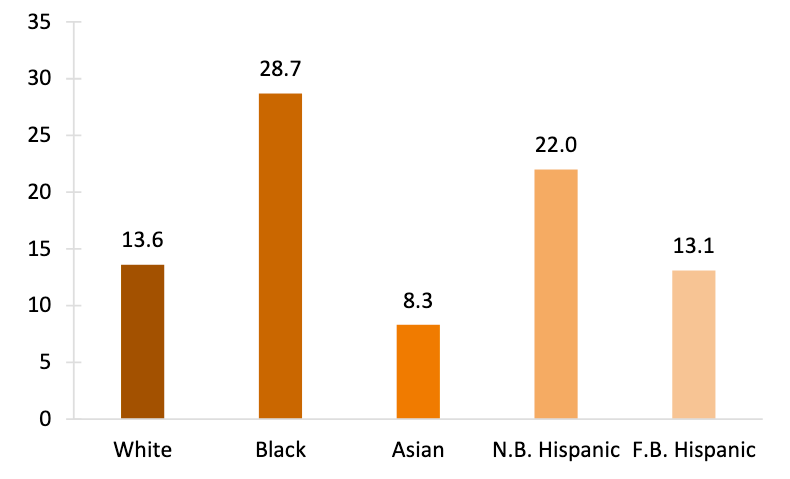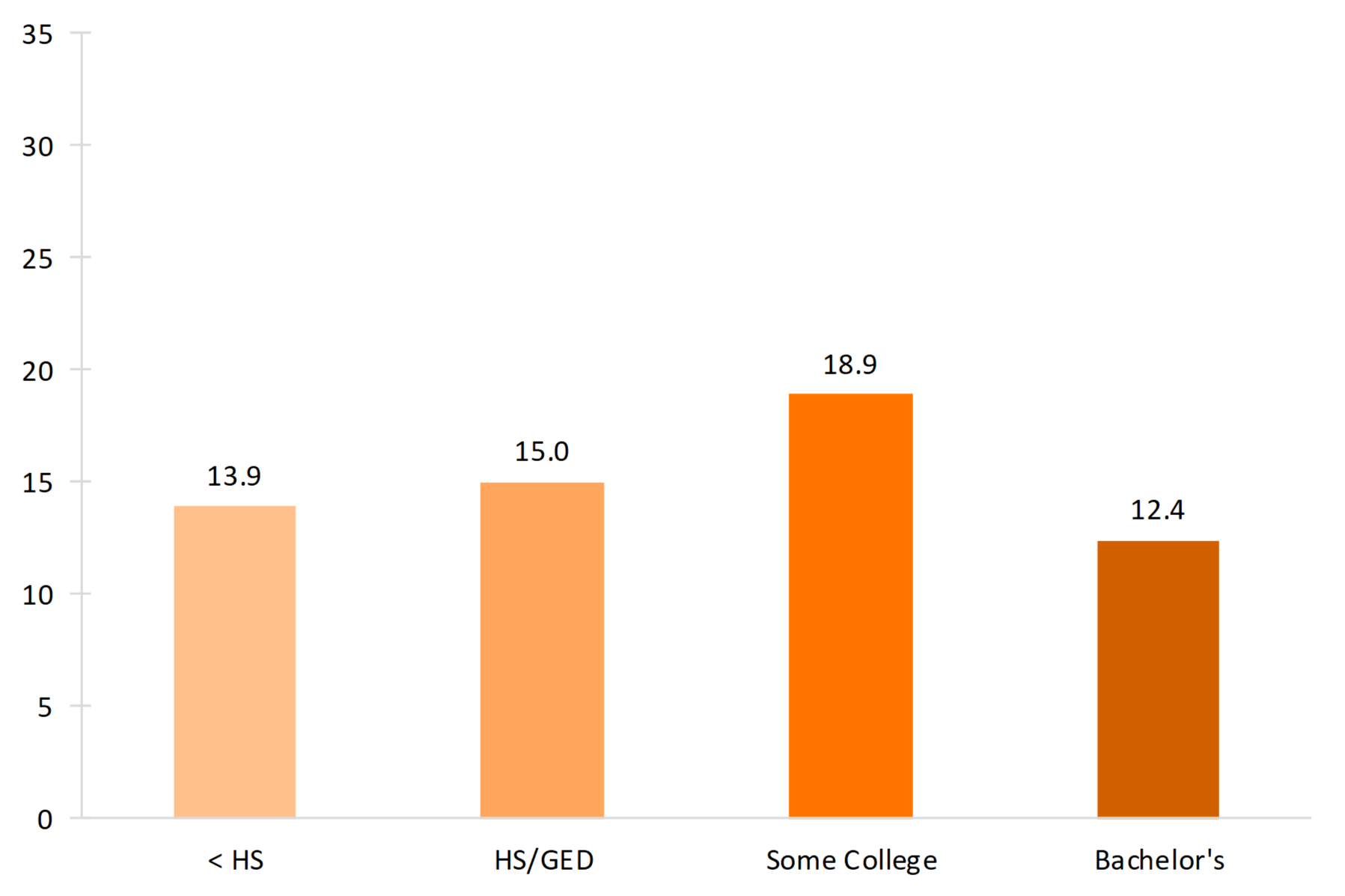First Divorce Rate in the U.S., 2018
Family Profile No. 2, 2020
Author: Colette Allred & Valerie J. Schweizer
In 2018, the overall U.S. divorce rate reached a forty-year low of 15.7 divorces per 1,000 married women (FP-19-23). Of all married women in 2018, 26% were in a second or higher order marriage (U.S. Census Bureau, ACS, 1-yr est., 2018). Compared to higher order marriages, first marriages are less likely to end in divorce (Cohen, 2016). Using 2018 American Community Survey 1-year estimates, we examine women’s first divorce rate, which is defined as the number of first marriages that ended in divorce per 1,000 first marriages among women 18 years and older. This Family Profile is an update to FP-18-15, FP-16-19, FP-14-09, FP-11-09, and FP-10-06.
Trends in First Divorce Rate
- The first divorce rate has generally decreased since 2008.
- After a plateau from 2009 to 2012, the first divorce rate declined, reaching a 10-year low of 14.9 divorces per 1,000 married women.
- An estimated 740,182 women experienced a first divorce in 2018.
Figure 1. First Divorce Rate for Women Aged 18 and Older, 2008-2018


The first divorce rate in 2008 was 18.7 first divorces per 1,000 currently married women. Ten years later—in 2018—it had dropped to 14.9 first divorces per 1,000 currently married women.

First Divorce Rate by Race and Ethnicity
- In 2018, Black women experienced the highest first divorce rate (28.7).
- Asian women had the lowest first divorce rate (8.3).
- Among Hispanics, there was a nativity gap with native-born Hispanics having a higher first divorce rate (22.0) than foreign-born Hispanics (13.1).
Figure 2. First Divorce Rate for Women Aged 18 and Older by Race, 2018

First Divorce Rate by Educational Attainment
- Women with some college education had the highest first divorce rate (18.9).
- The lowest first divorce rates were observed among women with at least a college degree (12.4) and women without a high school diploma (13.9).
Figure 3. First Divorce Rate for Women Aged 18 and Older by Education, 2018

Data Source
- U.S. Census Bureau; American Community Survey (ACS), One-Year Public Use Microdata Sample (PUMS), 2018.
References
- Allred, C. (2019). Divorce rate in the U.S.: Geographic variation, 2018. Family Profiles, FP-19-23. Bowling Green, OH: National Center for Family & Marriage Research. https://doi.org/10.25035/ncfmr/fp-19-23
- Anderson, L. R. (2016). First divorce rate in the U.S., 2014. Family Profiles, FP-16-19. Bowling Green, OH: National Center for Family & Marriage Research. https://www.bgsu.edu/ncfmr/resources/data/family-profiles/anderson-first-divorce-rate-2014-fp-16-19.html
- Cohen, P. N. (2016). Multiple-decrement life tables from 2010-2012 American Community Survey data marital events. Retrieved from https://familyinequality.wordpress.com/2016/06/08/life-table-says-divorce-rate-is-52-7/
- Gibbs, L. & Payne, K. K. (2011). First divorce rate, 2010. Family Profiles, FP-11-09. Bowling Green, OH: National Center for Family & Marriage Research. http://www.bgsu.edu/content/dam/BGSU/college-of-arts-and-sciences/NCFMR/documents/FP/FP-11-09.pdf
- Payne, K. K. (2011). First divorces in the U.S., 2008. Family Profiles, FP-10-06. Bowling Green, OH: National Center for Family & Marriage Research. http://www.bgsu.edu/content/dam/BGSU/college-of-arts-and-sciences/NCFMR/documents/FP/FP-10-06.pdf
- Payne, K. K. (2018). First divorce rate in the U.S., 2016. Family Profiles, FP-18-15. Bowling Green, OH: National Center for Family & Marriage Research. https://doi.org/10.25035/ncfmr/fp-18-15.
- Stykes, B., Gibbs, L., & Payne, K. K. (2014). First divorce rate, 2012. Family Profiles, FP-14-09. Bowling Green, OH: National Center for Family & Marriage Research. http://www.bgsu.edu/content/dam/BGSU/college-of-arts-and-sciences/NCFMR/documents/FP/FP-14-09-divorce-rate-2012.pdf
Suggested Citation
- Allred, C. & Schweizer, V. (2020). First divorce rate in the U.S., 2018. Family Profiles, FP-20-02. Bowling Green, OH: National Center for Family & Marriage Research. https://doi.org/10.25035/ncfmr/fp-20-02
This project is supported with assistance from Bowling Green State University. From 2007 to 2013, support was also provided by the U.S. Department of Health and Human Services, Office of the Assistant Secretary for Planning and Evaluation. The opinions and conclusions expressed herein are solely those of the author(s) and should not be construed as representing the opinions or policy of any agency of the state or federal government.
Updated: 04/06/2021 02:04PM


